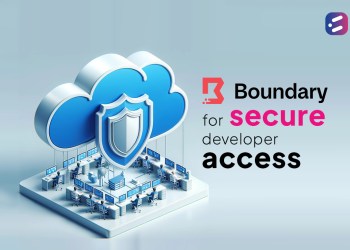What’s your top development priority? Is it managing your application’s technically complex backend? Do you need UI/UX that’s completely customizable? Or is the priority to take it live fast? That’s a business decision that only you can take. In this article, we’ll run through the coding options which can deliver the results that you require.
First, what are no-code platforms?
In simple words – they are drag-and-drop programming platforms. A no-code platform essentially uses a visual development interface to enable non-technical users to develop apps or websites by dragging and dropping software applications. You read that right – absolutely no-code needed.
With low-code and no-code development, you use a WYSIWYG platform to drag and drop elements to create your app quickly and efficiently as opposed to traditional coding or hand coding, which requires software developers to customize elements with code in a development language to build an app or website.
Chris Wanstrath, the CEO of GitHub, calls no-code the future of development.
And Wanstrath isn’t the only one who thinks it’s the future. Market research firm Forrester predicts that the no-code development platform market will hit $21.2 billion by 2022, while a Gartner forecast says more than half of medium-to-large enterprises will adopt low-code, no-code platforms as part of their overall IT strategy by next year. Two years ago, Google acquired AppSheet, an eight-year-old no-code mobile application-building platform to empower ‘citizen developers’ so to speak.
Why is low-code/no-code so popular?
It’s because almost no coding experience is required for application development. So, in an age when where demand for software exceeds the number of coders, no-code development tools would help organizations bypass the skills shortage.
What are the essential elements of no-code?
- Drag-and-drop elements to build web application services
- Easy enough for non-developers to build web application services
- Integrate with databases, web services, or APIs
Here are some of the key advantages of no-code platforms.
1. It’s faster
Front-end development using no-code is fast and efficient for quick go-live. In a global survey in 2021, about a third of the respondents indicated that no and low-code development is between 40 and 60% faster than traditional development and that no-code and low-code platforms help alleviate pressure on IT staff. No-code development is easy to use and allows non-programmers to create apps quickly and works especially well when the development team is backlogged.
2. It is more agile
No-code development utilizes a drag-and-drop interface built visually with set modules. This makes building apps a lot faster thereby increasing productivity as well.
3. Works for basic websites
Since the no-code approach does not involve programming languages, and instead takes a visual approach it works for all web application development. You can in effect change a feature at the drop of a hat.
4. UX will work perfectly
No-code is being increasingly used to build product and app prototypes, especially in the e-commerce stratosphere, for landing pages and single-page sites. You’re also being cost efficient here as to create a basic product with no-code, you are saving money on development.
But there are also some challenges with using no-code.
1. Not fully customizable
While some no-code platforms limit customization and allow you to design tailor-made apps, others may not. While there are millions of templates to choose from, you are likely to face limitations in customizing apps unless you partner with the right no-code development platform.
2. Limited design templates
No-code platforms are more about operational efficiency so one is most likely going to be faced with rigid templates. This can limit functionality and creativity.
3. Limited backend functionality
Since many no-code platforms are designed to create something one time, it is sometimes not a scalable solution unless you collaborate with the right technology partner. Also, you may not be able to control data storage and usage fully.
And there is one area where a plus-minus as well…
Hosting
The no-code development tool has its own hosting, which means that it is easy and fast to go live with the tool’s own hosting. But the code is not downloadable, which means you don’t own it, so moving to another platform can become difficult. Your app faces a security risk too because of the lack of control over data storage.
So, which is it, traditional hand-coding or the trending no-coding?
If you are a small business that lacks the budget to outsource to a third-party software developer, no-code platforms are one way to go as it is fast, agile, and efficient. However, to reduce security risks, and improve customization and functionality, hand coding may be a better option. Is no-coding or hand-coding the right approach for your company? The experts at CloudNow can help you make the right decision.













